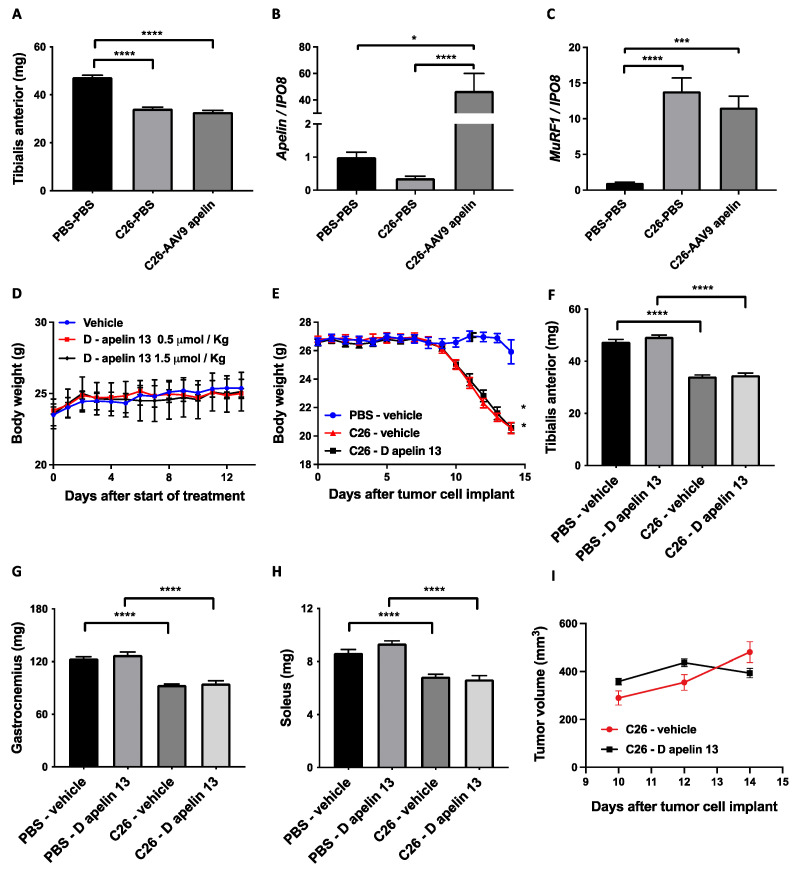Figure 5.
Intramuscular injection of preproapelin-expressing adenoassociated viruses or systemic treatment with D-apelin 13 do not protect muscles from cancer-induced wasting. Intramuscular injection of the preproapelin-expressing adenoassociated viruses type 9 (AAV9) does not preserve the TA from atrophy (A), even though the apelin gene is overexpressed in the muscle as shown by Q-PCR (B). C26-induced MuRF1 is not restrained by apelin overexpression (C). IPO8 is used to normalize the data. Ordinary one-way ANOVA, Kruskal–Wallis test, * p ≤ 0.05, *** p = 0.0001, **** p ≤ 0.0001, n = 8–18. Vehicle (H2O) or 0.5 or 1.5 μmol/Kg D-apelin 13 were injected daily intraperitoneally in BALB/c mice and body weighs monitored over time. After 13 days, there were no differences in BWL among groups, excluding overt toxicity. Mouse body weights are plotted over time (D). One-way ANOVA for repeated measures, not significant, n = 3–4. C26 tumor cells subcutaneously injected in BALB/c mice cause BWL after 10 days from the injection, and D-apelin 13 does not preserve mouse body weight (E). One-way ANOVA for repeated measures, * p ≤ 0.05, n = 15. D-apelin 13 does not preserve muscles from atrophy induced by C26 cancer, as seen from TA (F), gastrocnemii (G) and solei (H) weighed at sacrifice, 14 days after tumor injection. Ordinary one-way ANOVA, **** p ≤ 0.0001, n = 15. Tumors were manually measured with a caliper. D-apelin 13 did not affect tumor growth rate (I). Multiple t-tests, not significant, n = 15.

